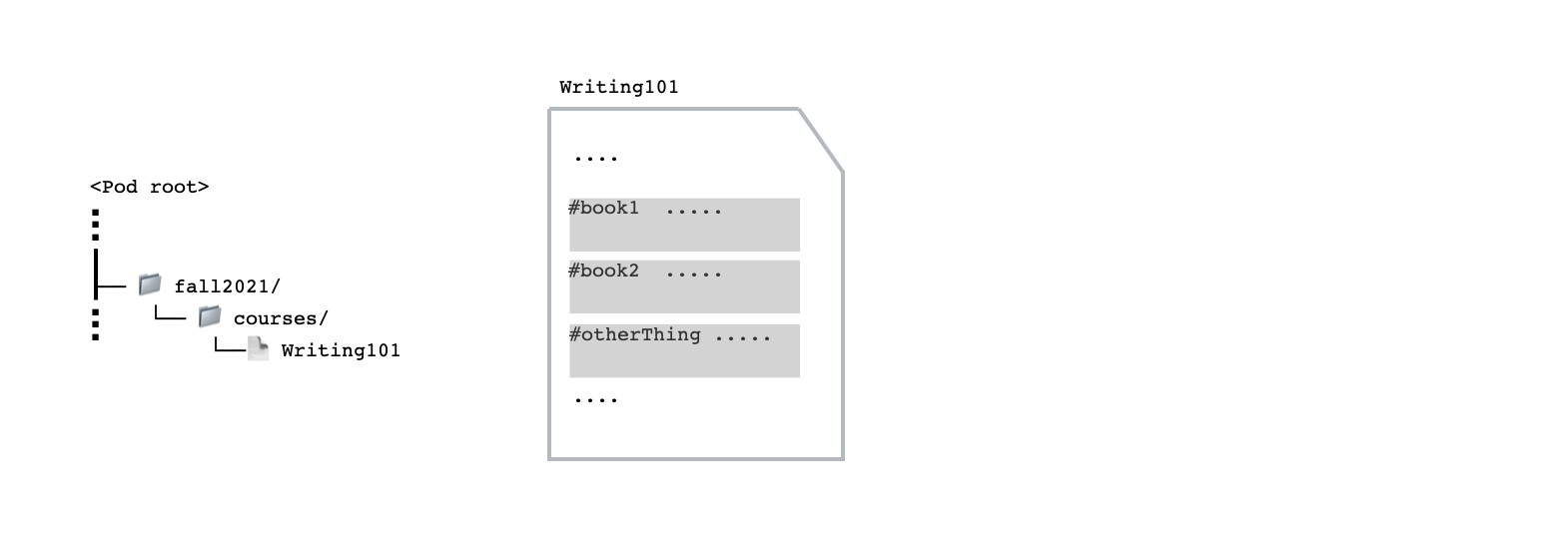Structured Data (RDF Resources)#
Structured data, in this context, refer to Resource Description
Framework (RDF) data that are
represented as Things in SolidDatasets, where SolidDatasets are organized in
Containers.
Things, SolidDataset, and Containers#
Data is structured as properties of a Thing, where a Thing
refers to a data entity. For example, if you want to save information
about a course, you can have a Thing that represents a book for the
course, and save various properties (such as name, author) for
that book; the author itself can be another Thing with its own
properties.
A Thing is saved as part of a SolidDataset, where a
SolidDataset contains a set of Things. That is, you do not save
a Thing independently from its SolidDataset.
You can organize SolidDatasets in a
Container. A Container can contain SolidDatasets and
other Resources, including other Containers.
Containers are analogous to folders in a directory structure.
For example, in your Pod, you could have: a Container named
fall2021/; fall2021/ contains another Container named
courses/; courses/ contains a SolidDataset that corresponds
to the course Writing101; and the Writing101 contains data
about the Things (such as the books) for that course.

URL as Identifiers#
Each Container’s URL act as its unique identifier. A
Container’s URL ends with a slash /.
Each SolidDataset’s URL act as its unique identifier. Its URL path
consists of its containers and its name.
Each Thing’s URL act as its unique identifier. Typically, all
Things in a SolidDataset have URLs relative to the
SolidDataset’s URL. That is, a Thing’s URL generally is the
SolidDataset’s URL appended with a # hash fragment.
For example, consider the following content in a Pod where the Pod URL
is https://storage.inrupt.com/<Root Container>/:

fall2021/, theContainer, has the URLhttps://storage.inrupt.com/<Root Container>/fall2021/.courses/, theContainer, has the URLhttps://storage.inrupt.com/<Root Container>/fall2021/courses/.Writing101, theSolidDataset, has the URLhttps://storage.inrupt.com/<Root Container>/fall2021/courses/Writing101.The
ThingsinWriting101have URLs relative to its URL; e.g.,https://storage.inrupt.com/<Root Container>/fall2021/courses/Writing101#book1https://storage.inrupt.com/<Root Container>/fall2021/courses/Writing101#book2https://storage.inrupt.com/<Root Container>/fall2021/courses/Writing101#otherThing
Inrupt Client Library#
To read and write data to Pods, Inrupt provides the solid-client
library.